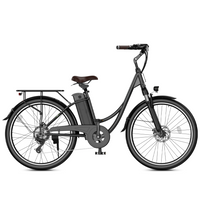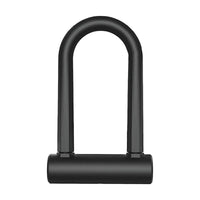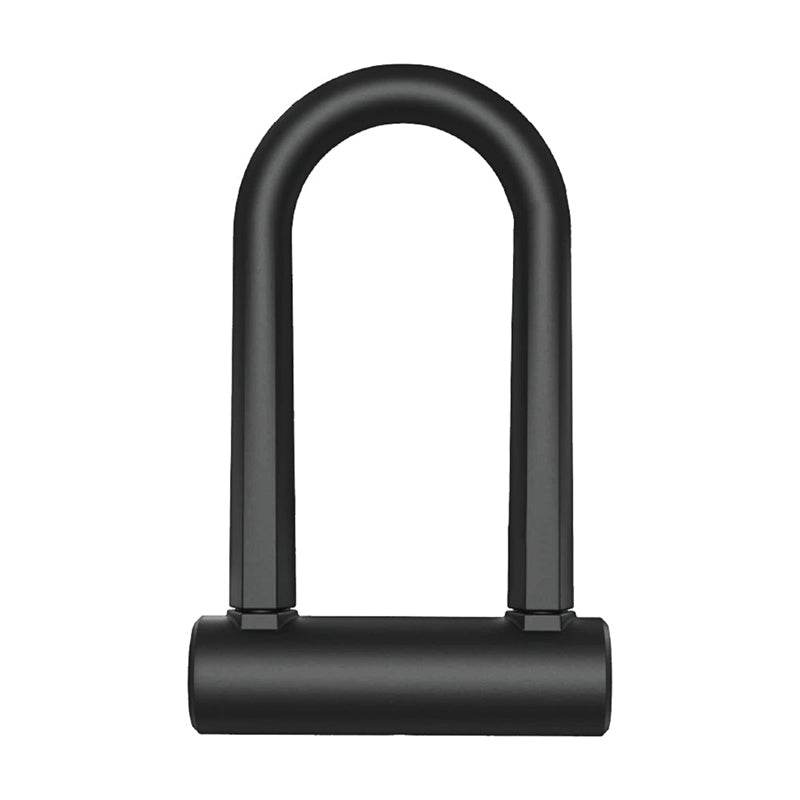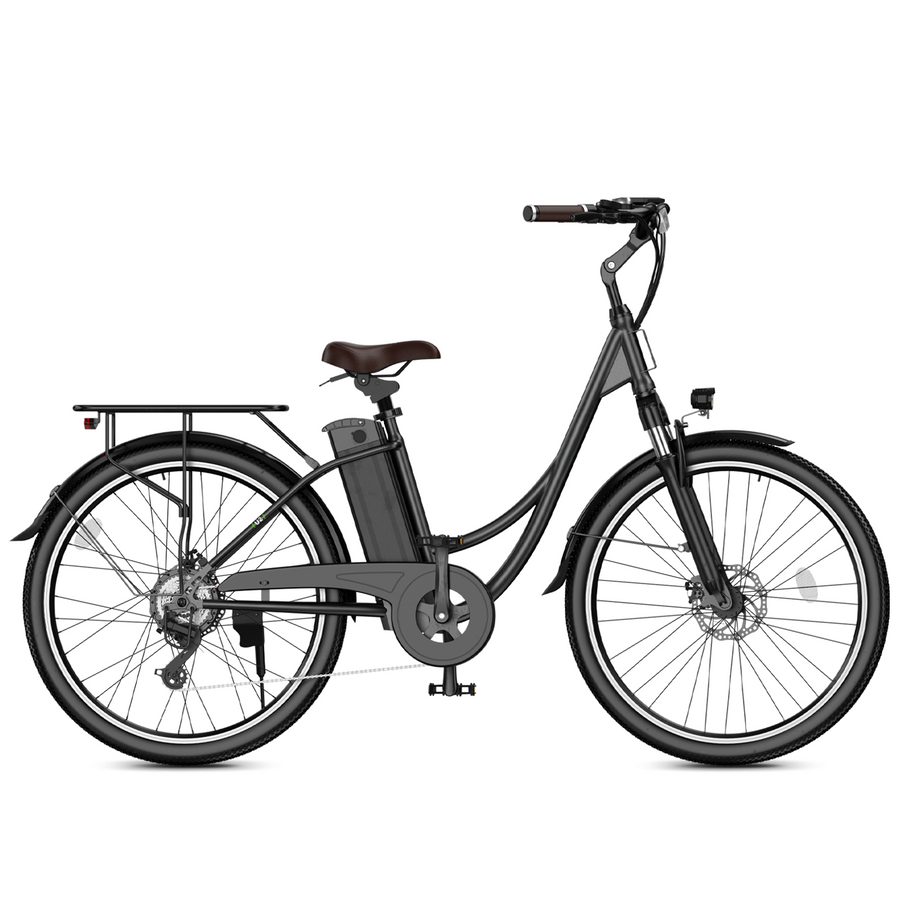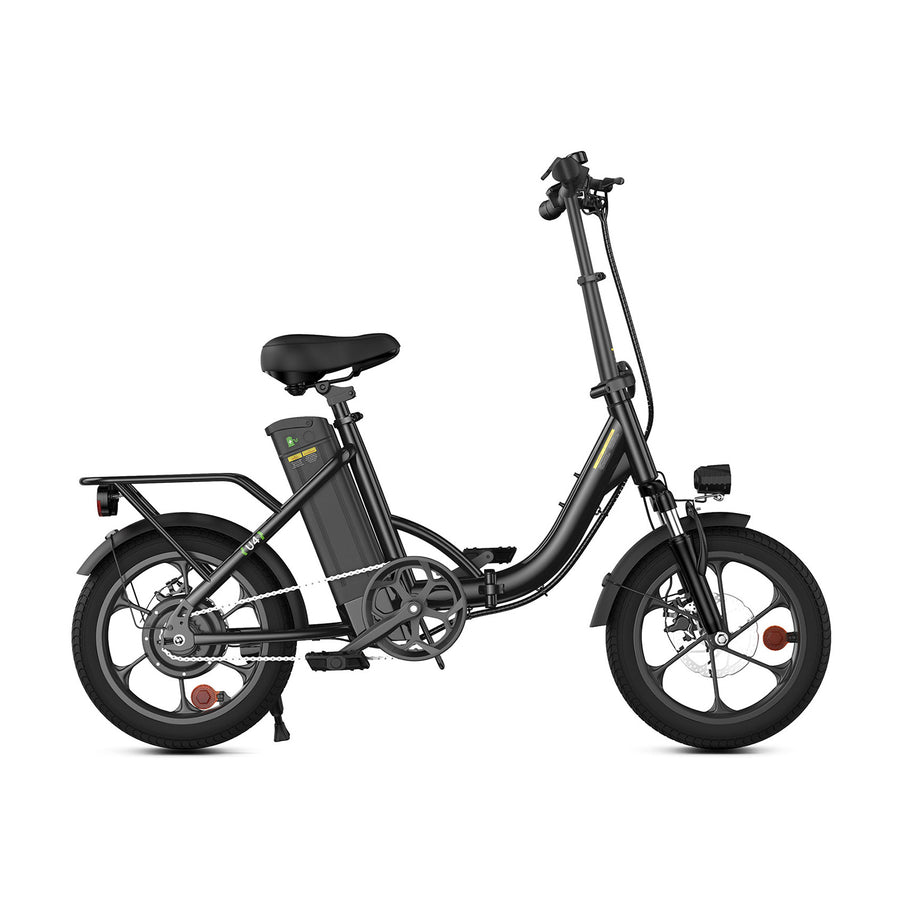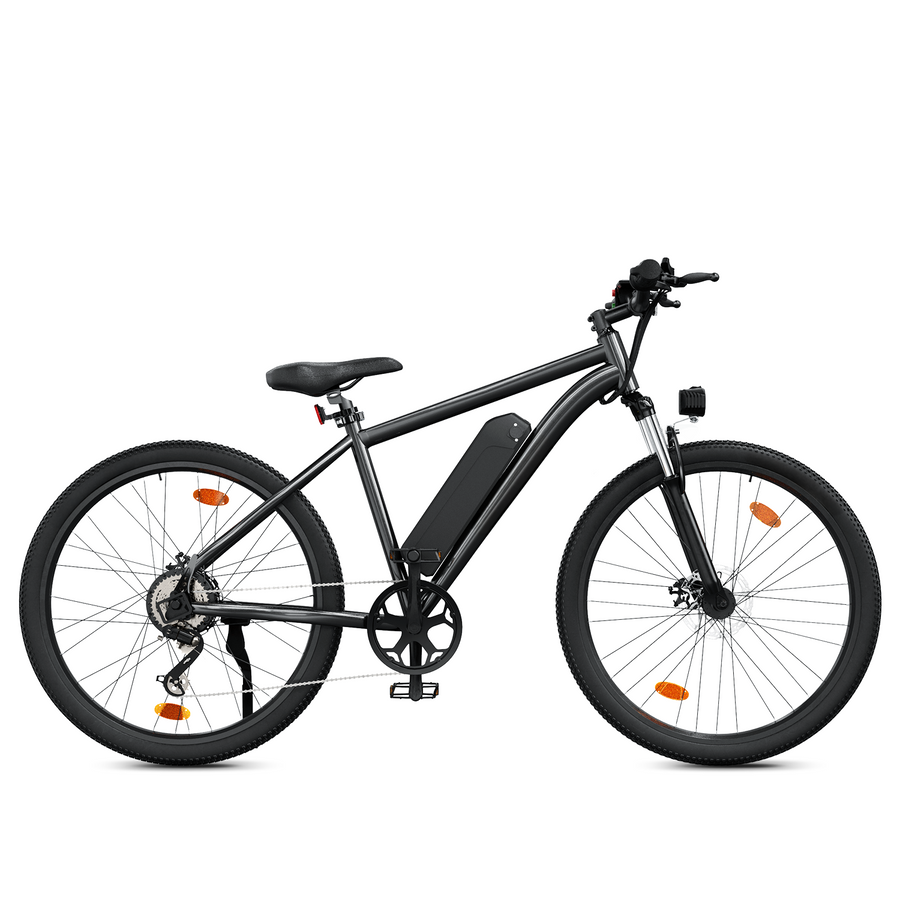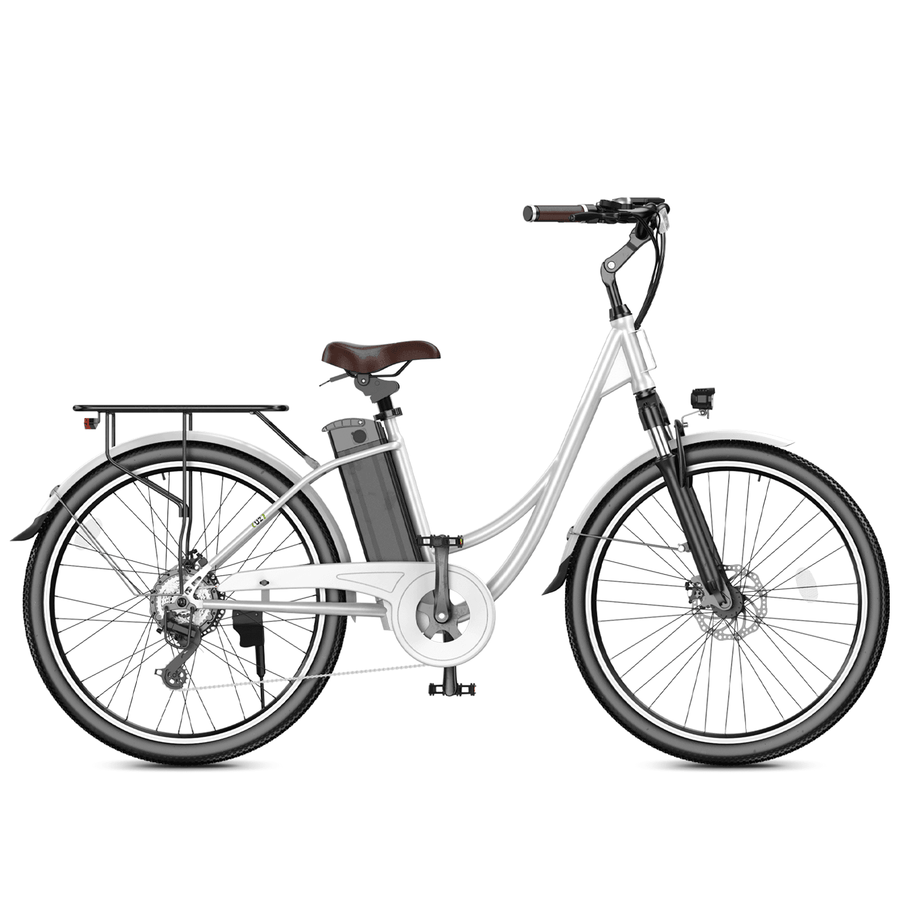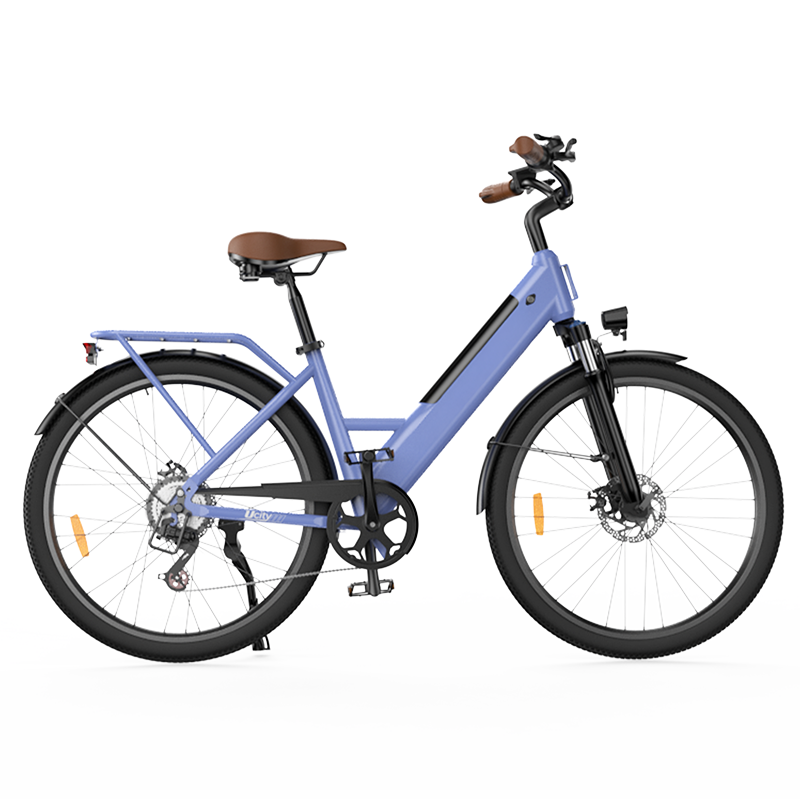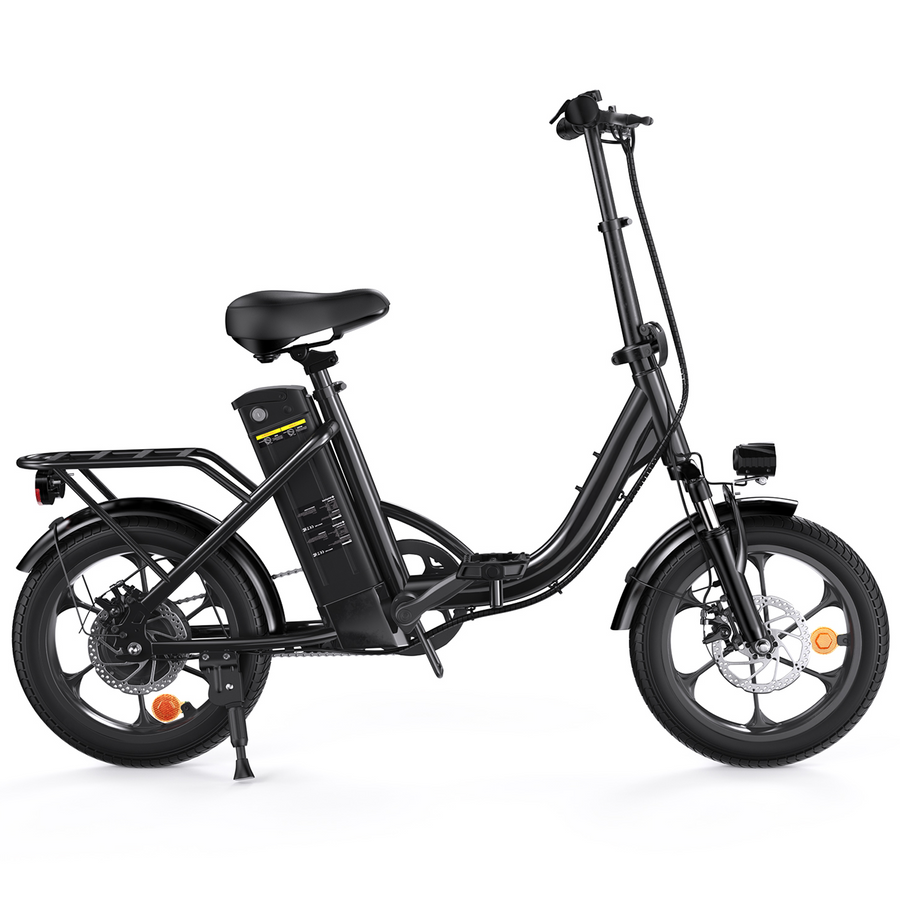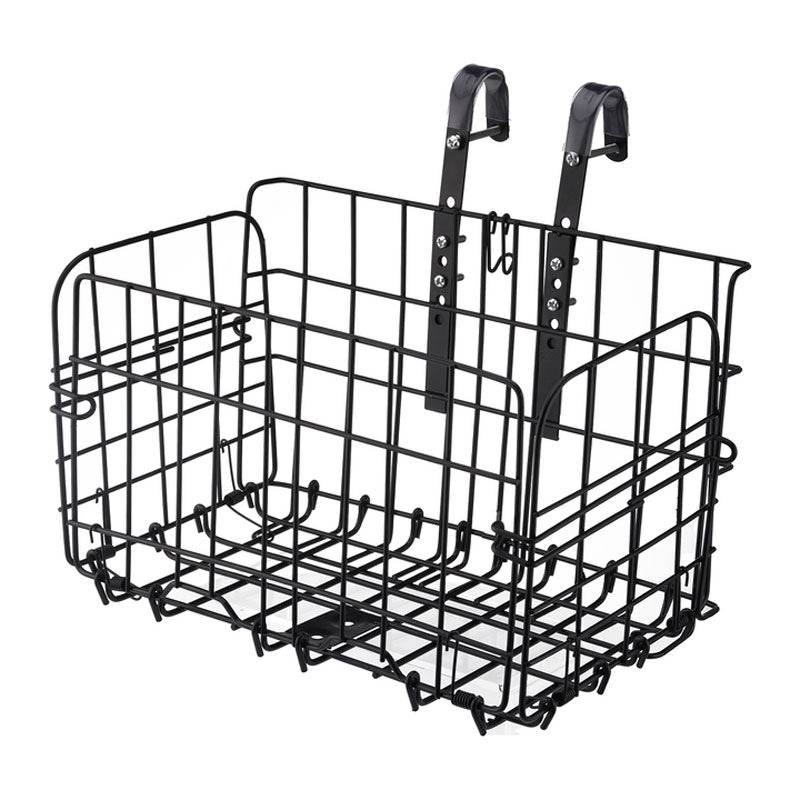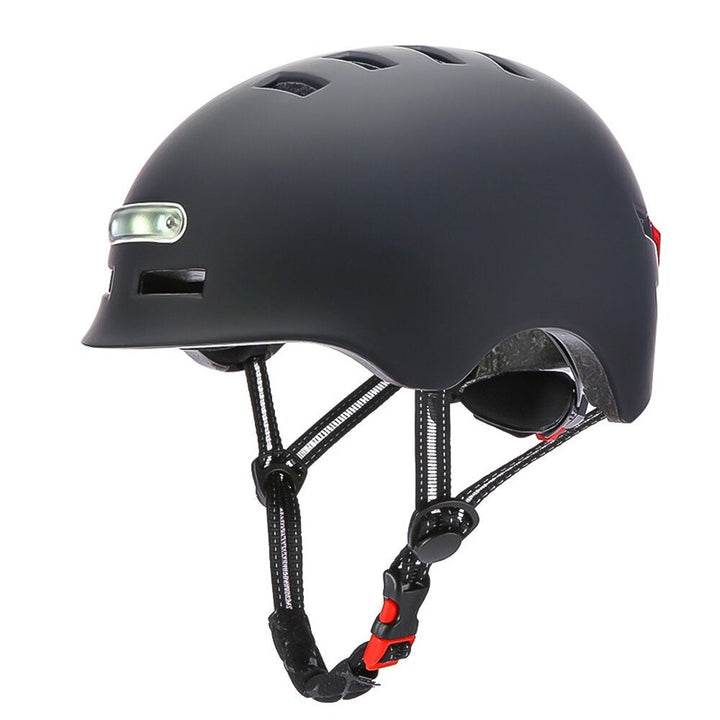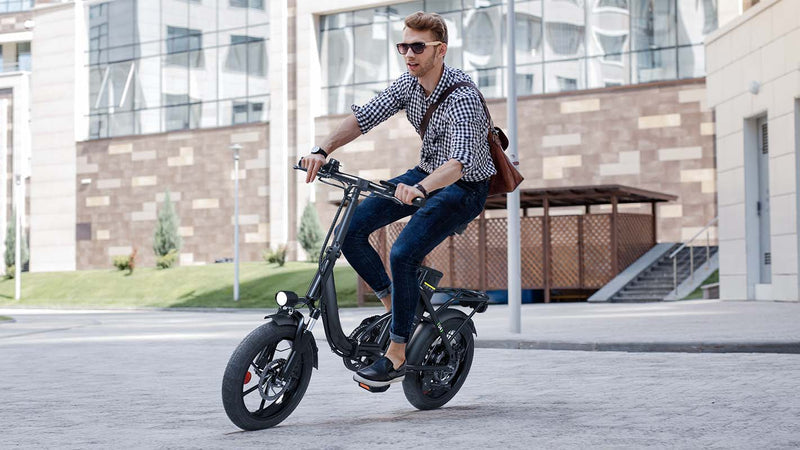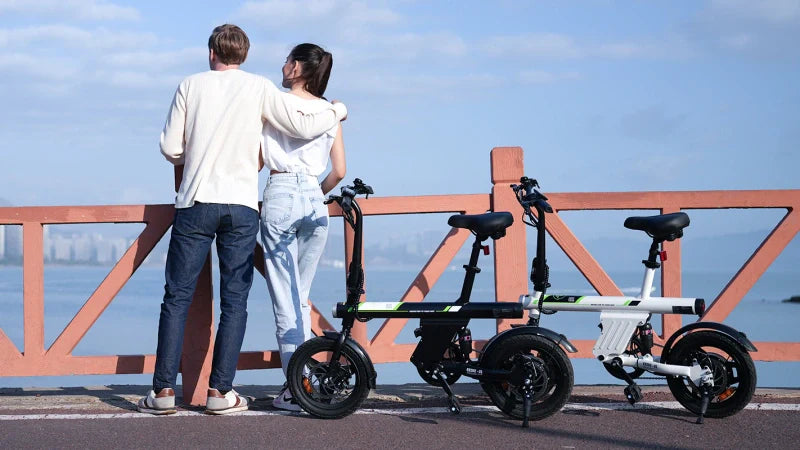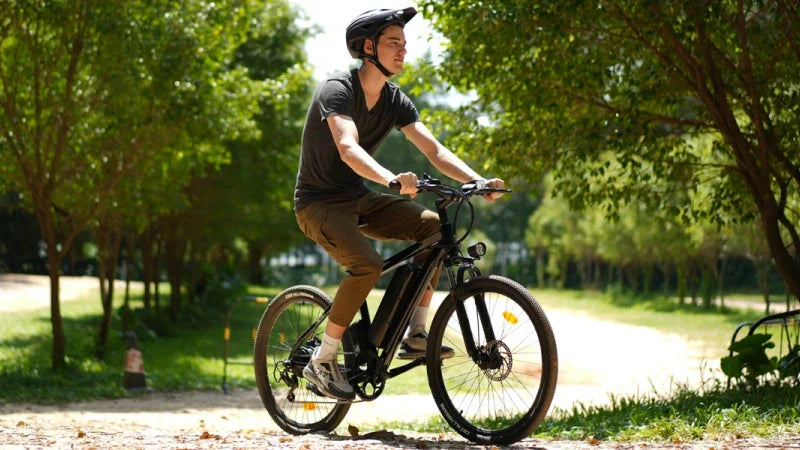What Is a Hybrid Electric Bike? Discover the Perfect Ride for City and Trails
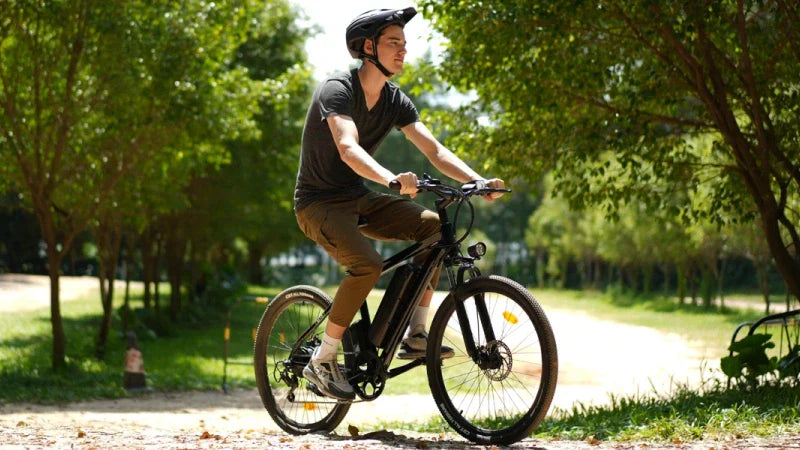
In today’s world of versatile cycling options, the hybrid electric bike is quickly becoming a top choice for riders seeking the best of both urban commuting and off-road adventure. Combining the comfort and adaptability of traditional hybrid bikes with the power and ease of electric pedal assist, hybrid electric bikes offer an efficient, eco-friendly, and enjoyable way to explore city streets and rugged trails alike. Whether you’re commuting to work, running errands, or enjoying weekend rides, understanding what a hybrid electric bike is and how it works can help you find the perfect ride tailored to your lifestyle and needs.
What Is a Hybrid Electric Bike?
A hybrid bike is a versatile and practical cycling option that combines the best features of both road bikes and mountain bikes into one efficient design. Known for their sturdy yet lightweight frames, hybrid bikes are built to handle a variety of terrains—from smooth city streets to rugged countryside trails. They typically come equipped with a wide range of gears, enabling riders to easily navigate flat roads and steep hills alike. The wider tires offer enhanced stability and comfort, while the frame often supports useful accessories such as mudguards, pannier racks, and lights, making hybrid bikes an excellent choice for commuting, recreational cycling, and light touring.
An electric hybrid bike enhances this versatility by integrating a powerful electric motor and rechargeable battery system that assist the rider during pedaling. Unlike traditional pedal-powered bikes, electric hybrid bikes provide pedal-assist power, meaning the motor delivers a boost that corresponds to the rider’s pedaling effort. This pedal assistance helps riders conquer steep inclines, extend their ride distance, and maintain consistent speeds with less physical effort and fatigue. Electric hybrid bikes are especially popular among commuters who want to arrive at work refreshed, leisure riders exploring longer routes, and touring cyclists carrying heavier loads over varied terrain.
Most electric hybrid bikes are designed to support speeds up to 15.5 miles per hour (25 km/h), which complies with legal speed limits for pedal-assist e-bikes in many countries. Riders have full control over the level of motor assistance, with multiple power settings available to customize support based on terrain, rider fitness, and battery life optimization.
Different Types of Hybrid Electric Bikes
Electric hybrid bikes are broadly categorized into two main types based on their design and intended use: urban commuter bikes and recreational or fitness-oriented bikes. Understanding these types will help you choose the best electric hybrid bike tailored to your lifestyle and riding needs.
1. Urban Commuter Electric Hybrid Bikes
Urban commuter electric hybrid bikes are engineered to be reliable, efficient, and practical for everyday city riding. These bikes prioritize speed, lightweight construction, and the ability to carry additional loads, making them ideal for riders who use their bike as a primary mode of transportation to work or school.
-
Key Features: Urban electric hybrids typically feature rigid forks and slick, narrow tires designed for smooth pavement riding, maximizing speed and efficiency. They often come equipped with essential accessories like mudguards, rear racks, and integrated lights to enhance practicality and safety during daily commutes.
-
Purpose: Designed for professionals and commuters who may need to arrive at their destination looking polished—often in business attire—these bikes offer a clean, fuss-free riding experience without sacrificing functionality. Many models allow for easy attachment of panniers, backpacks, or even child seats, making them versatile enough to replace short car trips or public transport.
-
Benefits: Thanks to the electric motor’s pedal-assist system, urban commuter bikes make it easier to tackle hills and longer distances without arriving exhausted. This encourages eco-friendly commuting and reduces reliance on cars, cutting down on traffic congestion and emissions in cities.
2. Recreational and Leisure Electric Hybrid Bikes
The recreational and leisure category encompasses a broad range of electric hybrid bikes designed for versatile off-road and casual riding experiences. These bikes are suitable for riders who seek enjoyment, fitness, or adventure beyond the urban environment.
-
Range of Use: This category includes bikes built for light off-road riding on bridleways, cycle paths, and gravel trails, as well as classic-style bikes perfect for relaxed weekend rides or running errands. Whether you’re taking a leisurely trip with your dog, heading out for a countryside excursion, or planning a holiday adventure on your camper, these electric hybrids provide the versatility to cover varied terrains and activities.
-
Design Features: Recreational electric hybrids often feature wider tires for better grip and stability, some with front suspension forks to absorb bumps and improve comfort on uneven surfaces. Their frames are generally designed for comfort and durability, often accommodating racks and accessories for added convenience.
-
Ideal For: These bikes suit riders who want an enjoyable cycling experience that blends fitness with fun, allowing them to explore more challenging routes or simply enjoy casual rides without the strain of traditional pedaling.
Hybrid Electric Bikes vs Electric Bikes – Key Differences
With the surge in popularity of electric-powered bicycles, many riders find themselves wondering about the distinctions between hybrid electric bikes and electric bikes. While the terms may sometimes be used interchangeably, understanding their key differences can help you make the best choice for your cycling needs.
What Is a Hybrid Electric Bike?
A hybrid electric bike combines the features of a traditional hybrid bike with an electric motor system. Hybrid bikes themselves blend the comfort and versatility of road bikes and mountain bikes, featuring lightweight frames, medium-width tires, and a relaxed riding position. When electric assistance is added, these bikes offer pedal-assist technology that amplifies your pedaling power, making them suitable for both city commuting and light off-road use.
What Is an Electric Bike?
The term electric bike (e-bike) broadly refers to any bicycle equipped with an electric motor to assist with propulsion. E-bikes come in various forms—road, mountain, cargo, folding, and hybrid—all powered by electric motors with different specifications depending on their design and purpose.
Key Differences Between Hybrid Electric Bikes and Electric Bikes
-
Design and Purpose
-
Hybrid Electric Bikes focus on versatility, comfort, and adaptability. They typically have a balanced frame geometry that works well on paved roads, bike paths, and mild off-road terrain. The electric motor is integrated to support moderate speeds and extend range, making them perfect for daily commuters and casual riders.
-
Electric Bikes, as a broader category, include specialized designs such as high-performance mountain e-bikes, powerful cargo e-bikes, and sleek road e-bikes. These may feature more robust motors, larger batteries, or enhanced components tailored to specific uses.
-
Motor Power and Speed
-
Hybrid electric bikes generally come with mid-range motors (around 250W to 350W), offering speeds up to the legal limit of 25 km/h (15.5 mph). Their power is optimized for urban and mixed-terrain riding without excessive weight.
-
Other electric bikes can feature more powerful motors (up to 750W or higher in some markets) and higher top speeds, suited for more demanding off-road conditions or heavier cargo loads.
-
Weight and Frame Construction
-
Hybrid electric bikes maintain a balance between durability and lightness to provide comfortable handling and ease of use in varied environments.
-
Electric bikes designed for mountain biking or cargo purposes often have heavier, reinforced frames to accommodate stronger motors and batteries, which adds weight but increases strength and load capacity.
-
Range and Battery Size
-
Hybrid electric bikes typically feature medium-sized batteries that provide sufficient range for daily commuting and weekend rides, usually between 40-80 kilometers.
-
Specialized electric bikes may include larger battery packs to support extended off-road adventures or heavy-duty hauling.
-
Riding Experience
-
Hybrid electric bikes offer a natural riding feel with pedal-assist that smoothly supplements your effort without overpowering the ride. They’re ideal for riders seeking versatility, comfort, and efficiency.
-
Other electric bikes may provide more aggressive power delivery, customizable riding modes, and advanced suspension systems for specific performance needs.
How to Choose the Right Hybrid Electric Bike
Choosing the right hybrid electric bike is essential to ensure a comfortable, efficient, and enjoyable ride whether you’re commuting, exercising, or exploring. Here are the main factors to consider when selecting your perfect electric hybrid bike:
1. Motor and Battery Size
The motor and battery are the heart of any electric bike, and understanding their specifications is vital. The motor’s power affects how much assistance you’ll receive while pedaling, especially on hills or challenging terrain. Battery capacity, usually measured in watt-hours (Wh), determines how far your bike can travel on a single charge.
-
Battery Capacity and Range: Larger batteries store more energy, providing longer ranges between charges, which is ideal for extended rides, touring, or commuting longer distances. However, bigger batteries add weight to the bike, which can affect handling and portability.
-
Consider Your Riding Needs: If your daily commute is short or you mostly ride in flat urban areas, a smaller battery and lighter bike might be more practical and easier to maneuver. Conversely, if you plan on touring or carrying luggage, a larger battery will help ensure you have the power needed for longer trips without frequent recharging.
-
Realistic Expectations: Battery range estimates provided by manufacturers are typically based on ideal conditions. Actual range will vary depending on factors such as terrain (hills vs. flat roads), level of pedal-assist used, rider weight, weather conditions, and even tire pressure. Always consider a safety margin when calculating the range you require.
-
Quality Matters: As with most technology, quality and price often go hand in hand. For example, the Boardman HYB 8.9E Men’s Hybrid Electric Bike features a premium lightweight Fazua Evation drive system, delivering smooth pedal assistance for an average range of 25-30 miles, with the potential to reach up to 60 miles under optimal conditions. Investing in a reliable motor and battery system can significantly enhance your riding experience.
2. Frame Design and Style
Electric hybrid bikes come primarily in two frame styles: step-through and crossbar frames. Your choice here can impact comfort, ease of use, and the type of riding you plan to do.
-
Step-Through Frames: These bikes have a low or no top tube, allowing riders to mount and dismount with ease. This design is especially convenient for commuting, urban riding, or for those who prefer a more relaxed and accessible bike fit. A popular model like the Pendleton Somerby uses a step-through frame, making it a practical choice for riders seeking convenience without sacrificing style or performance.
-
Crossbar Frames: Featuring a traditional horizontal top tube, crossbar frames resemble classic mountain and road bikes. They typically offer a sportier ride and more aggressive handling, which can benefit riders who prioritize performance or plan to tackle varied terrain. The Carrera Subway is a prime example, blending a sturdy crossbar frame with modern electric components to deliver a dynamic ride.
-
Folding Electric Hybrid Bikes: If space-saving or portability is a priority, consider folding electric hybrid bikes. These models fold down for easy storage in small apartments, car trunks, or public transport, offering great flexibility for urban commuters.
3. Suspension
Suspension plays a significant role in ride comfort, especially if you plan to ride on mixed surfaces or off-road.
-
Suspension Forks: These front suspension systems absorb shocks and vibrations caused by uneven terrain such as potholes, gravel paths, or trail surfaces. A suspension fork can make rides smoother and reduce fatigue on longer journeys.
-
When to Choose Suspension: If your riding routes include off-road trails, towpaths, cycle paths with rough patches, or bridleways, opting for a hybrid bike equipped with a suspension fork is highly recommended. It improves control and comfort, ensuring you can confidently handle different surfaces.
-
No Suspension or Rigid Forks: For riders who mostly stick to smooth pavement or city streets, a bike without suspension or with a rigid fork can be lighter and more efficient, as less energy is lost through suspension movement.
Essential Features of a Hybrid Electric Bike
Hybrid electric bikes are designed with specific features that enhance comfort, safety, and performance for both urban commuting and off-road adventures. These features make long-distance rides more enjoyable and practical for riders of all levels.
-
Flat Handlebars: Most hybrid electric bikes come equipped with flat handlebars, providing a comfortable, upright riding position. This posture is ideal for city commuting as it improves visibility and control, allowing riders to navigate through traffic and obstacles with ease. The upright stance also reduces strain on the back and shoulders during longer rides.
-
Disc Brakes: Disc brakes are a common and highly effective braking system found on hybrid electric bikes. Whether mechanical or hydraulic, disc brakes offer superior stopping power in all weather conditions. Mechanical disc brakes operate via cable tension, offering simplicity and reliability, while hydraulic disc brakes use pressurized fluid for stronger, more responsive braking with less effort. This ensures safety on both paved roads and rougher terrain.
-
Wide Tires: Hybrid e-bikes often feature wider tires than traditional road bikes, striking a balance between speed and stability. These tires absorb vibrations on various surfaces—from smooth asphalt to gravel paths—providing better grip and control, especially when riding off-road or on uneven trails.
-
Mudguards, Pannier Racks, Lights, and Kickstands: For added convenience, many hybrid electric bikes come with mounts for mudguards and pannier racks, perfect for commuters carrying bags or groceries. Some models even include these accessories pre-installed. Integrated lighting systems powered by the e-bike’s battery improve visibility and safety without the hassle of replacing batteries. Kickstands add practicality for easy parking during stops.
Together, these features make hybrid electric bikes an excellent all-round choice for riders looking for comfort, safety, and versatility on every journey.
Top Hybrid Electric Bike from Finbike
嵌入视频代码:
<iframe width="560" height="315" src="https://www.youtube.com/embed/gyFjtZC8wf4?si=g5paJK83NmGBNNdF" title="YouTube video player" frameborder="0" allow="accelerometer; autoplay; clipboard-write; encrypted-media; gyroscope; picture-in-picture; web-share" referrerpolicy="strict-origin-when-cross-origin" allowfullscreen></iframe>
For riders seeking a powerful, versatile, and high-performance electric hybrid bike, the Finbike M10 Mountain E-Bike stands out as a top choice. Designed to seamlessly blend the rugged capabilities of a mountain bike with the convenience of electric pedal assistance, the M10 delivers an exceptional riding experience on both urban streets and challenging off-road trails.
Key Features of the Finbike M10 Hybrid Electric Bike
-
Robust Motor and Battery System: The Finbike M10 is equipped with a high-torque 250W rear hub motor that provides smooth and reliable pedal assist, helping riders conquer steep hills and long distances effortlessly. Paired with a 36V 11.6Ah removable lithium-ion battery, this electric hybrid bike offers an impressive range, allowing for extended rides of up to 50 miles (80 km) on a single charge depending on terrain and riding mode.
-
Durable and Lightweight Frame: Constructed from high-quality aluminum alloy, the M10’s frame strikes the perfect balance between durability and lightweight performance. This ensures excellent handling and maneuverability, whether commuting through city streets or tackling rugged mountain trails.
-
Advanced Suspension: To enhance rider comfort and control, the Finbike M10 features a front suspension fork that absorbs shocks from uneven surfaces, providing a smooth ride even on rough terrain.
-
Versatile Tire Setup: Equipped with 27.5-inch wide tires, the M10 offers superior traction and stability, ideal for both paved roads and off-road adventures. The tires’ robust tread design contributes to better grip on gravel, dirt, or wet surfaces.
-
High-Quality Components: This electric hybrid bike comes with a 7-speed Shimano drivetrain, allowing riders to easily shift gears and maintain optimal cadence across various terrains. The hydraulic disc brakes ensure responsive and reliable stopping power in all weather conditions.
-
Practical Design: The M10 includes practical features such as integrated LED front and rear lights for safety during night rides, a sturdy kickstand, and a comfortable saddle designed for long-distance comfort. Its removable battery design also makes charging simple and convenient.
Why Choose the Finbike M10 Electric Hybrid Bike?
The Finbike M10 is perfect for riders who want the flexibility to switch between urban commuting and off-road exploration without compromising on power or comfort. Whether you’re navigating busy city streets, cruising on weekend trail rides, or tackling challenging hills, this hybrid electric bike delivers excellent performance and versatility.
By combining cutting-edge electric motor technology with durable mountain bike features, the Finbike M10 offers a sustainable, efficient, and fun way to travel. Its eco-friendly electric assist helps reduce carbon emissions and makes cycling accessible to a wider range of riders, including those seeking to extend their riding range or reduce physical exertion.
Conclusion
Electric hybrid bikes are revolutionizing the way we ride by combining the adaptability and comfort of traditional hybrid bicycles with the power and ease of electric pedal-assist technology. Whether you are an urban commuter seeking an efficient, eco-friendly alternative to driving, a recreational rider exploring varied terrains, or someone looking for the perfect balance between performance and convenience, there is an electric hybrid bike designed to meet your needs.
Understanding the differences between hybrid bikes and electric bikes, as well as knowing the key types such as urban commuter models and recreational hybrids, empowers you to make an informed decision. Highlighting top models like the Finbike M10 Mountain E-Bike demonstrates how modern electric hybrids can offer powerful motors, long-lasting batteries, durable frames, and versatile features that enhance your cycling experience.
By choosing the right electric hybrid bike, you not only enjoy a comfortable and efficient ride but also contribute to sustainable, low-impact transportation. Whether you prioritize lightweight agility or motorized assistance for tackling hills and long distances, the perfect electric hybrid bike awaits to transform your journeys.
FAQs
What is the difference between an electric bike and a hybrid electric bike?
An electric bike (e-bike) is a bicycle equipped with an electric motor and battery that provides pedal-assist power, making it easier to ride longer distances, tackle hills, and reduce rider fatigue. E-bikes come in many types including commuter, mountain, cargo, and touring models.
A hybrid electric bike combines the features of a traditional hybrid bike—offering a balance between road and mountain bike qualities such as a comfortable frame, wider tires, and versatile gearing—with an electric motor and battery system for pedal assistance. Essentially, all hybrid electric bikes are electric bikes, but specifically designed to offer comfort, adaptability, and performance for both urban and light off-road use.
What are the disadvantages of a hybrid bike?
While hybrid bikes are highly versatile and comfortable, they do have some limitations:
-
Weight: Hybrid bikes tend to be heavier than road bikes, which can make them less efficient for speed-focused riding.
-
Performance on Rough Terrain: They are not as specialized as mountain bikes for rugged trails or as aerodynamic as road bikes for racing, so they may not perform optimally in extreme conditions.
-
Limited Motor Assistance: Traditional hybrid bikes rely entirely on rider pedaling power and do not provide electric motor assistance, which can make long or hilly rides more tiring compared to electric hybrids.
-
Less Specialized: The generalist design means hybrids may not excel in specific disciplines like competitive cycling or serious off-road biking.
Do hybrid bikes need charging?
Traditional hybrid bikes do not require charging since they are powered solely by human pedaling. However, electric hybrid bikes—which include a motor and battery system—do require charging. The battery typically needs to be recharged after riding distances ranging from 25 to 60 miles depending on the bike model, terrain, and level of motor assistance used.
What is the point of hybrid bikes?
The primary purpose of hybrid bikes is to offer riders a versatile, comfortable, and practical cycling option that merges the best features of road and mountain bikes. Hybrid bikes are ideal for a wide range of activities including commuting, leisure rides, fitness, and light touring. They provide a balanced riding position, a variety of gears for different terrains, and the ability to fit accessories like racks and mudguards, making them perfect for everyday use. When equipped with an electric motor (electric hybrid bikes), they also help riders tackle longer distances and hills with less effort, expanding the accessibility and enjoyment of cycling.







